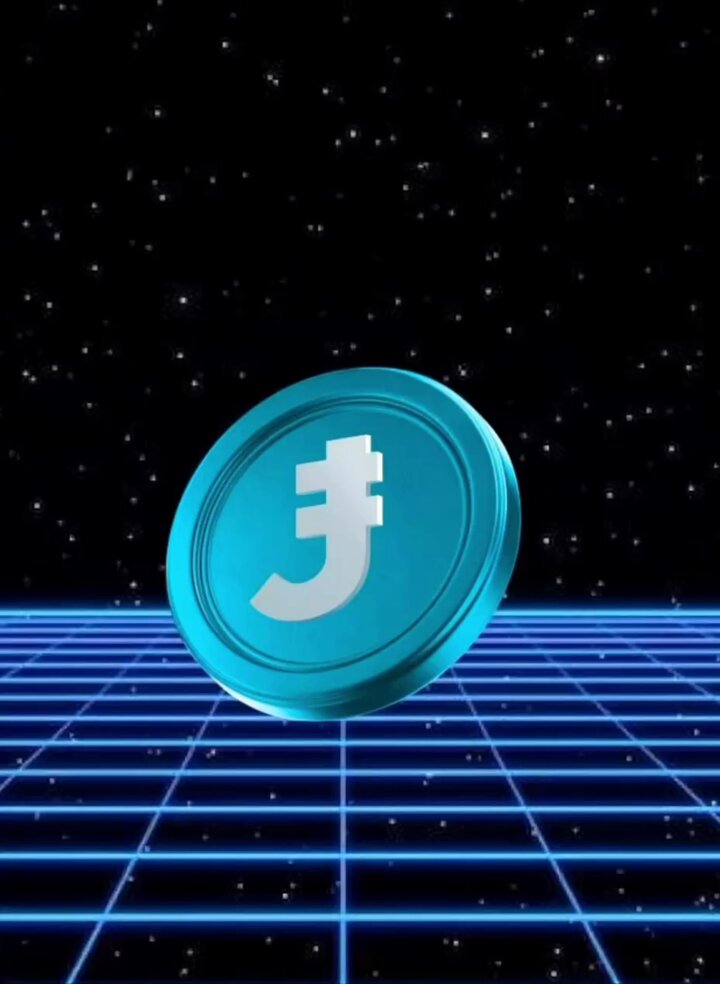Signum Newsletter 29
Weekly alpha for your weekend reads
This edition of the newsletter dives into TEEs and AI Agents - The AI Agent landscape has evolved beyond simple chatbots to focus on projects with utility and innovative features, with Trusted Execution Environments (TEEs) emerging as a crucial security layer for protecting AI agents and their private keys in decentralized systems. We'll also share some interesting articles, portfolio updates and market highlights.

a) Stackable Business Models in the Age of AI
• NFX outlines how successful AI startups need to focus on innovative business models that can stack and evolve over time, with two main initial strategies emerging: Price Disruption (using AI to offer services significantly cheaper than incumbents) and Quality Innovation (providing complex, premium services at scale).
• The article emphasizes that while these are effective opening moves, long-term success depends on combining these strategies with additional revenue layers such as upstream monetization, bundling, performance rewards, usage fees, or data monetization, as evidenced by only 58% of AI startups having successfully monetized their products.
b) Agents
• Agents are systems that can perceive and act upon their environment through tools, with their success depending on both their tool inventory and planning capabilities, which includes plan generation, reflection, and error correction mechanisms.
• The article emphasizes that while agents can significantly enhance AI capabilities through tool integration, they face various challenges including planning failures, tool execution issues, and efficiency concerns, with the author noting that effective agents typically require a strong foundation model as their brain, proper tool selection, and robust evaluation methods to detect and address potential failures.
c) Solana MEV Report: Trends, Insights, and Challenges
• The report details how MEV differs from other chains due to its unique architecture and absence of a global mempool, with various forms of MEV including liquidations, arbitrages, front-running, and sandwich attacks, the latter being particularly concerning as data shows a single program (vpeNAL) executed 1.55 million sandwich transactions for a profit of 65,880 SOL ($13.43 million) over 30 days.
• The ecosystem is actively working on several MEV mitigation mechanisms, including validator whitelists, dynamic slippage protection, RFQ systems, sandwich-resistant AMMs, and Multiple Concurrent Leaders (MCL), though challenges remain as the MEV landscape continues to evolve rapidly.
a) Jambo
• Jambo's token ($J) will be launching exclusively on Solana (total supply of 1,000,000,000) and will also be listed on OKX
b) Artela
• Artela's native token ($ART) will have a total supply of 1 billion tokens distributed across various categories including Community (62%), Team (15%), Investors (18%), and Early Contributors (5%).
• The tokenomics include an annual inflation rate starting at 8% that decreases by 1% yearly until reaching 0%, with ART serving multiple functions including staking for network security, gas fees for transactions, governance voting power, and use as a liquid asset within the ecosystem.
c) Sonic
• Sonic Labs has partnered with Circle to offer USDC.e, a bridged version of USDC from Ethereum, as the official stablecoin on their platform, which can be transferred through the Sonic Gateway and used for DEX trading, liquidity provision, and payments.
• The announcement also outlines various methods to bridge USDC from different chains including Ethereum, Solana, and Fantom, with a single contract address that will persist through any future upgrades to native USDC, ensuring a seamless developer and user experience.
d) Mantra
• MANTRA blockchain has partnered with UAE-based property conglomerate DAMAC Group to tokenize at least $1 billion worth of their assets in early 2025, enabling investors to finance DAMAC's portfolio across real estate development, hospitality, and data centers.
• This move comes as part of DAMAC's broader engagement with blockchain technology, following their 2022 decision to accept crypto payments, and coincides with President-elect Trump's recent announcement that DAMAC plans to invest $20 billion in data centers across several U.S. states.
Throughout the last quarter of 2024, AI Agents were the talk of the town, dominating on-chain mindshare and market share. AI agents are intelligent, autonomous virtual assistants designed to relieve us of tasks that would otherwise require human effort. To read more about AI Agents, refer to our previous piece that serves as a primer to this intriguing new crypto vertical.
Since then, the agentic vertical has evolved leaps and bounds. Gone are “sentient yappers” and the automated reply guys. The flavour of the market has since rotated to agentic projects with utility or have a defining innovative feature that serves as a moat.
The majority of AI Agents from the earlier part of Q4 ‘24 have now been forgotten. There are only a number of AI Agents from that time that have been able to establish a moat, such as Zerebro, who made music and art its niche, or aixbt, who brands itself as the KOL who gives alfa 24/7. An up and coming segment of the agentic market are AI-powered applications. An example is the DeFAI segment, which leverages the automation and sentience of AI Agents to smoothen users’ DeFi experience across various dApps (decentralised applications) and functionalities. Another example are the projects that are trying to integrate AI Agents into games, giving existing games a new flair. Lastly, AI Infrastructure such as launchpads (e.g. Virtuals, Top Hat) and development frameworks (e.g. ai16z, Zerebro) have taken the spotlight, seeing the most capital inflow as of late.
Where does TEE fit in all this?
An overlooked layer of the agentic tech stack is the integration of Trusted Execution Environments (TEEs). A TEE is a specialised hardware designed to create isolated environments for running sensitive computations securely. It ensures data confidentiality and protection even in untrusted or potentially compromised systems. TEEs act as a safeguard, isolating critical applications (such as private keys, AI models, or sensitive credentials) from less secure or unrelated applications. Communication between the secure and normal environments is tightly controlled and allowed only with specific privileges.
In the context of AI agents, the agent and its private key can operate entirely within the secure environment of a TEE. This setup prevents unauthorized access or abuse of the agent or its credentials. It ensures that even if someone tries to compromise the broader system, they would need special privileges to interact with or exploit the secure AI agent. This capability is particularly valuable in decentralized AI systems, where trust, privacy, and security are essential for handling proprietary or sensitive information.
Phala Network
Phala Network is an example of projects building in the TEE vertical. It is a protocol that revolves around verifiable compute, made possible by TEEs. Phala’s TEE technology combines software and hardware-based TEEs, enhancing security and privacy for decentralized AI (DeAI). Additionally, Phala's Key Management System (KMS) enhances security by continuously rotating management keys, reducing the risk of prolonged data exposure and providing an added layer of protection.
More relevant to AI Agents, a key development for the AI Agent vertical was Phala’s TEE integration into ai16z’s Eliza, the leading open-source AI Agent framework on Solana at present. Eliza allows for the deployment of AI agents across social media platforms such as Discord, Twitter, and Telegram. It offers a RAG memory system, media analysis, document processing, and more. By integrating Phala’s TEE, these capabilities benefit from cryptographic verification and improved privacy. Phala’s framework supports modularity and custom plugins, allowing developers to scale seamlessly and incorporate new integrations with ease.
On the roadmap is Phala 2.0, which introduces a powerful GPU TEE network, an upgrade from its existing CPU-based infrastructure. By integrating NVIDIA Confidential Computing (TDX), Phala ensures sensitive GPU computations remain isolated and secure, even on compromised hosts. Additionally, Phala is launching a Layer 2 rollup on Ethereum to provide fast, low-cost, and secure transactions while combining scalable ZK proofs with TEE infrastructure. Through Phala Cloud, developers gain seamless access to GPU and CPU TEEs, enabling private, AI-ready application deployment with real-time monitoring and trust verification.
Phala has seen a good amount of adoption across its product suite. Service providers such as Hyperbolic Labs, io.net, NEAR Protocol and more have adopted Phala’s TEE GPUs to secure LLM model training and data. On the other hand, 0G Labs, Ritual and Redpill have been using Phala’s TEE CPUs to safeguard LLM API calls.
The future of TEE agentic integrations
As the AI Crypto vertical continues to grow, it is likely that we see more use-cases and synergies between agentic developments and the current crypto tech stack. One such possible development in the near future is Eigenlayer’s potential involvement in furthering verifiable and secure computation.
Most of us might know Eigenlayer as the premier infrastructural layer that allows for the restaking of Ethereum and its Liquid Staking equivalents for projects to tap on Ethereum’s security. However, recently, the Eigenlayer team seems to have taken an interest in AI Agents. We think that there is an opportunity for Eigenlayer to contribute to the agentic tech stack by providing AI Agents with a decentralised compute stack secured by Ethereum, via Eigenlayer’s Actively Validated Services (AVSs).
This is just the tip of the iceberg. We believe that there will be a plethora of existing projects that will bring useful integrations to AI Agents, embracing the collaborative and open-sourced nature of the crypto community








 8,963
8,963



